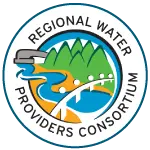DOCUMENTS
F.A.Q.s
A - Lake Grove Water District will be flushing the pipes that make up the water distribution system during the Spring. To flush pipes, crews typically open a fire hydrant, so large volumes of water flow through the pipes and out the hydrant. The water scours the inside of the pipes, removing sediment that accumulated in the system. Following flushing, your water may be discolored which only affects the appearance of the water, not the quality. To purge discolored water, run the water taps throughout your home until the water clears.
A - Here are the instructions for the Lake Grove Water District Online Bill Pay System.
A - Read the "Boil Water Notice" for updated information and instructions.
A - City of Lake Oswego bills for Sewer and Surface Water, Lake Grove Water District bills for the Drinking water only.
A - Don't panic, it's not sewer or anything harmful in most cases. Sediment settles in our pipes and from time to time that may be disturbed and colors the water. Just run the water till it runs clear. Should take only a few minutes in most cases. If you wish to call the office, that's okay too.
A - Keep an eye on our Home Page for further instructions.
A - Turn on the hot water in a couple of places and let it run till it runs cold.
A - Properties with a sprinkler systems need to be tested yearly to be sure that their system isn't backing up into the Districts, and causing contamination.
A - Currently there are three ORS statues that apply to LGW district. You can find them here: 198, 264, & 244
A - Your current bill will include your personalized code, in order to login to our Bill Pay system here. If you need instructions on using Bill Pay, make sure you read the instructions. If you still have questions, please let us know.
A - Yes, it is the home owner's or tenants responsibility. Keeping the area clean and clear helps the meter readers do their job efficiently. Here are some tips to maintain clear access to your water meter: Trim plants, bushes and trees. Remove all branches hanging lower than six feet over the meter box. Keep pets away from the path that leads to your meter. Please also ensure your home address is clearly displayed. This also assists emergency personnel who may need to find your home in a hurry.
A - Listen to the media or go to the website.
WHAT TO DO WHEN COLD THREATENS WATER PIPES
Winterize plumbing
This should include insulating exposed pipes, disconnecting and draining hoses from outdoor faucets, and installing covers over outside faucets. Locate your shut-off valve. You’ll need to use it if a pipe bursts.
To prevent freezing pipes
When lower temperatures threaten water pipes, property owners can take some simple precautions to protect water pipes from freezing:
Open cupboard doors in the kitchen and bathrooms. Water lines in these areas are frequently located in outside walls. Leaving the cupboard doors open allows pipes behind the cupboards to get more heat.
Let cold water run in faucets farthest from the street (A stream slightly smaller than a pencil width should be sufficient.)
To thaw frozen pipes
Thaw the lines safely. Use hair dryers, heat lamps or electric lamps. Thawing won’t be fast, but it will be safe. Do not leave pipes unattended.
Don’t use an open flame or an electric arc welder to thaw frozen water lines. Both can cause fires.
If your pipes are broken
Shut off the water and the water heater.
To repair the broken pipe, you may want to call a plumber.
If you are unable to find the shut off valve, or have water leaking in the house from a broken pipe, we can help you shut off the water.
Call our office at 503-636-1617 for assistance.
 Winterization
Winterization
Emergency Water Shut-off
Drinking Water Advisory Tool
